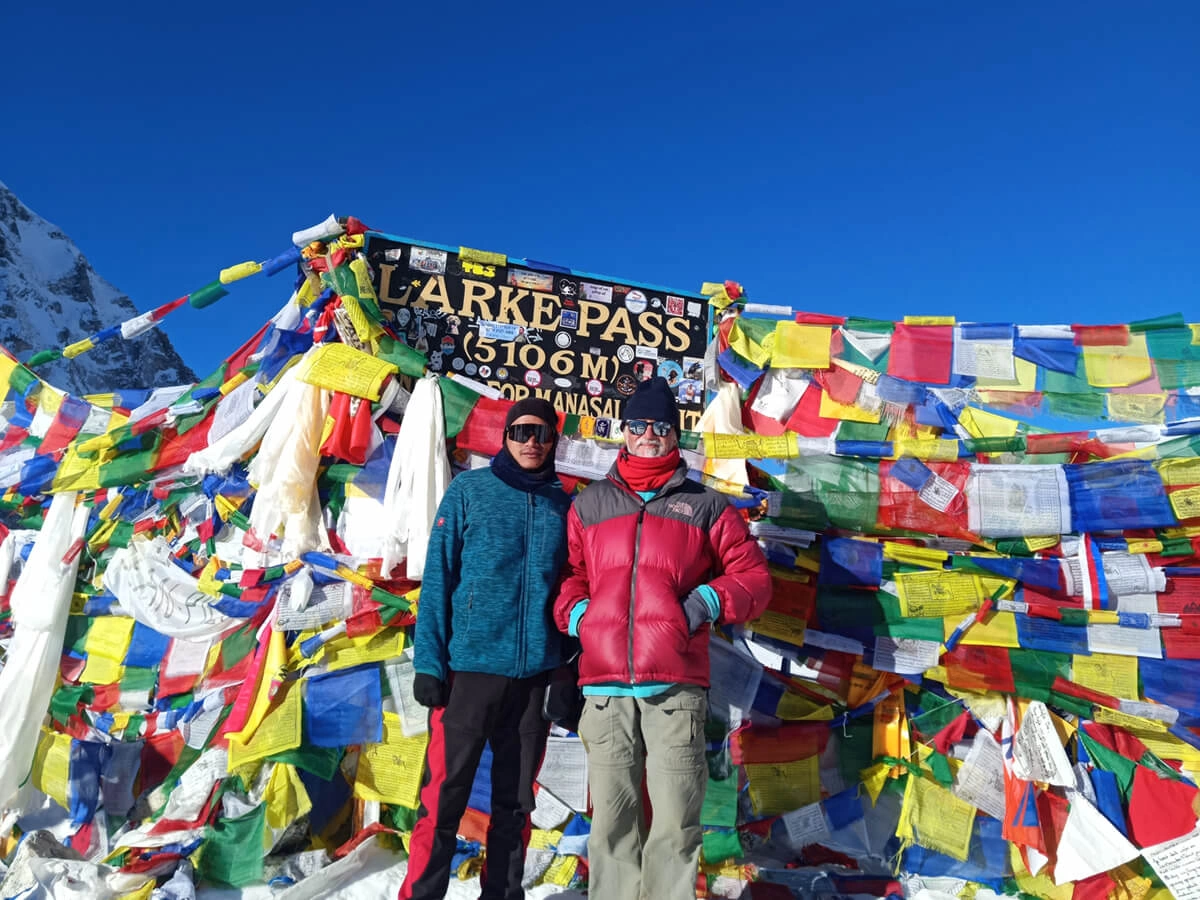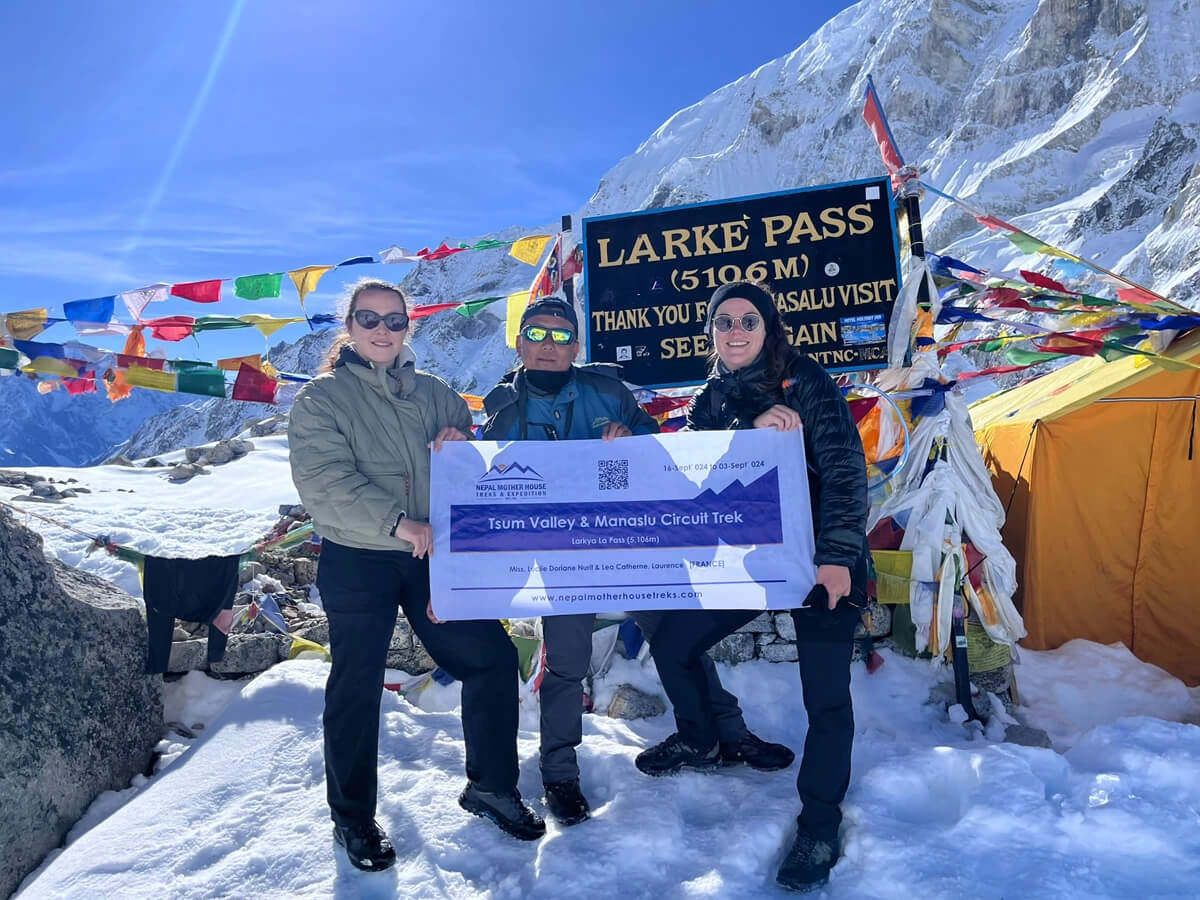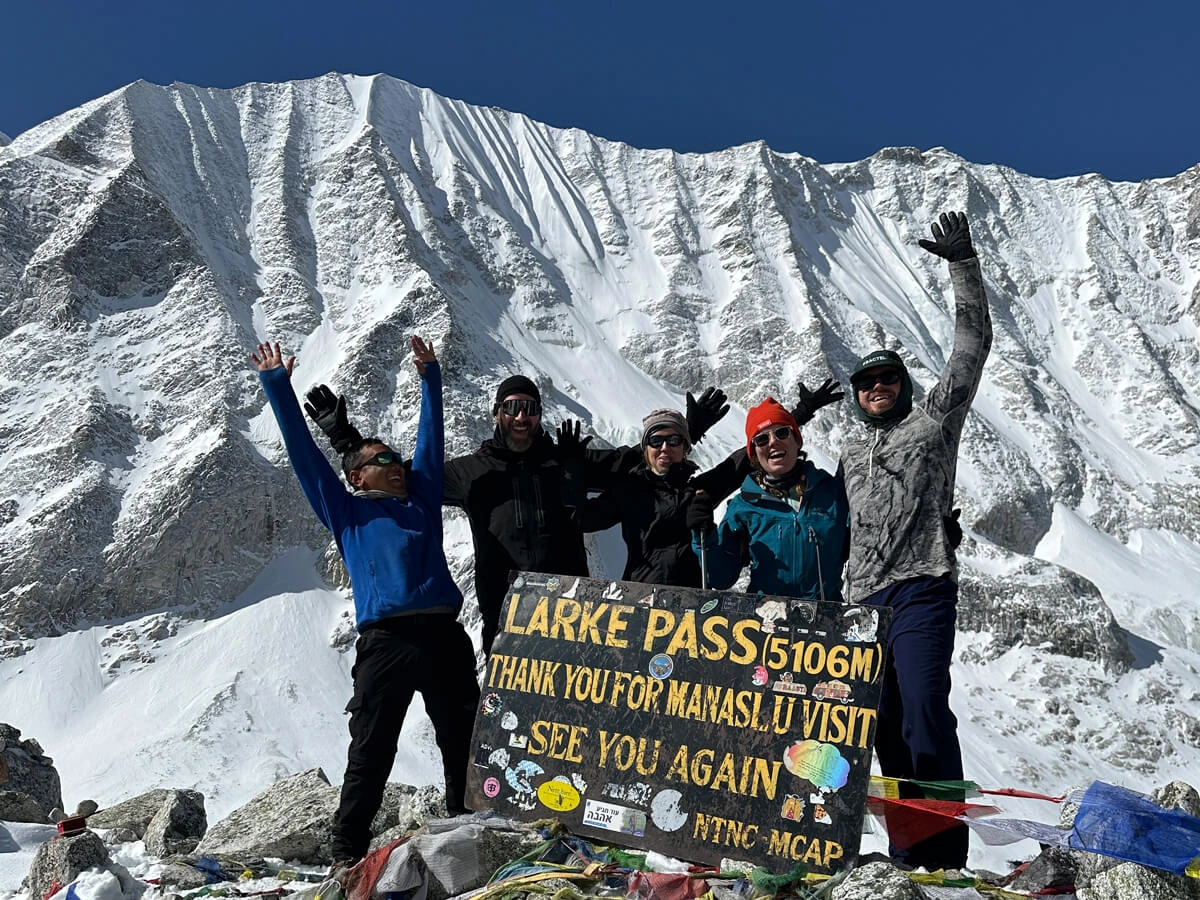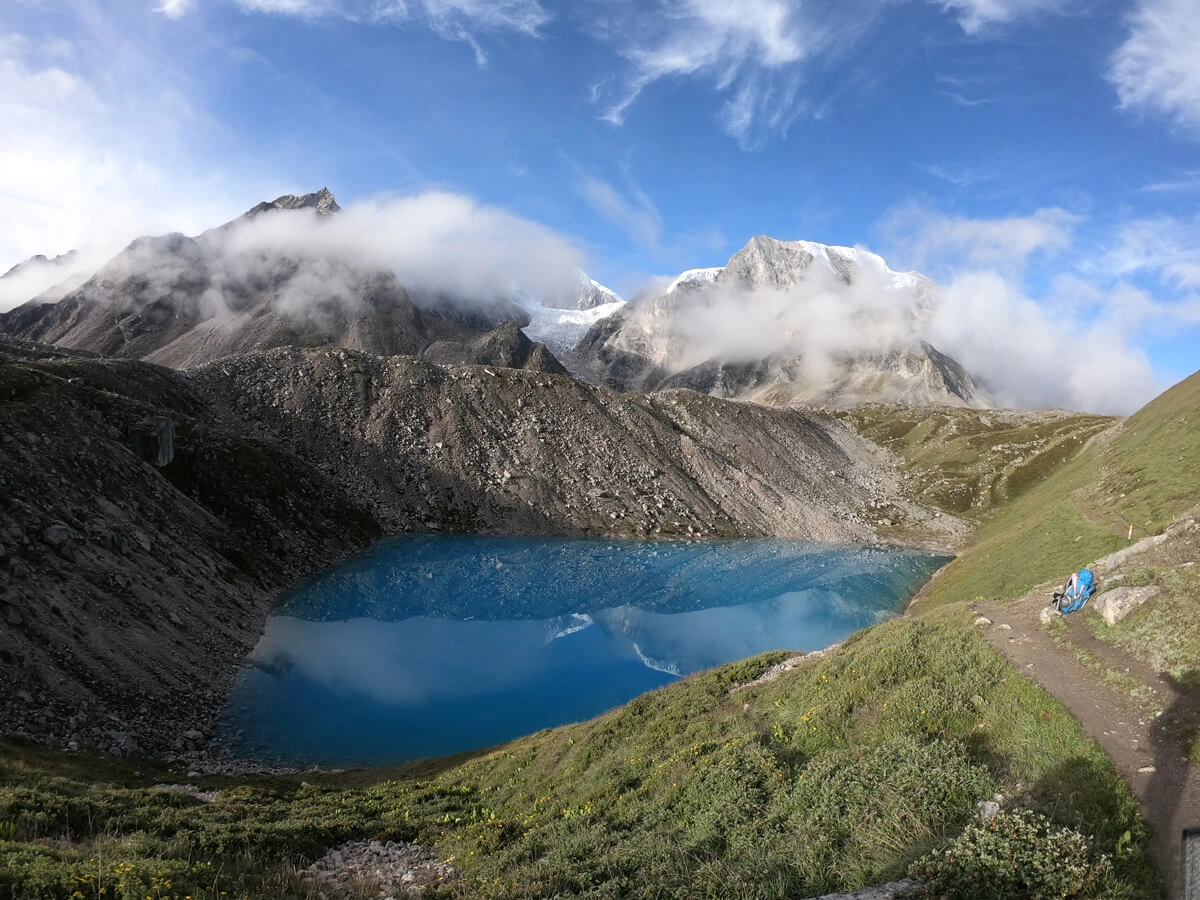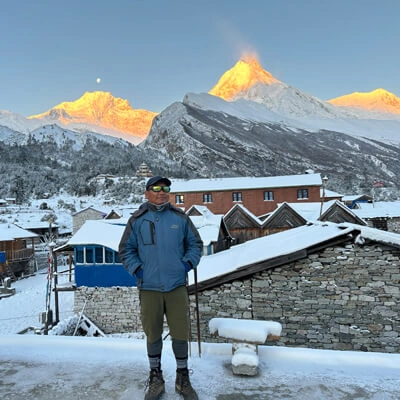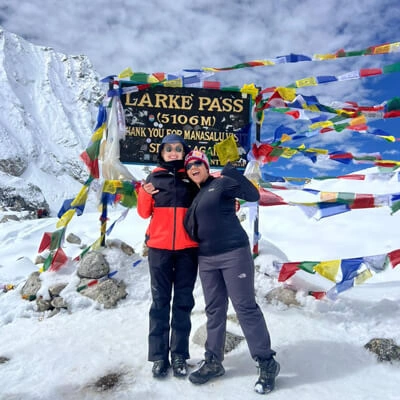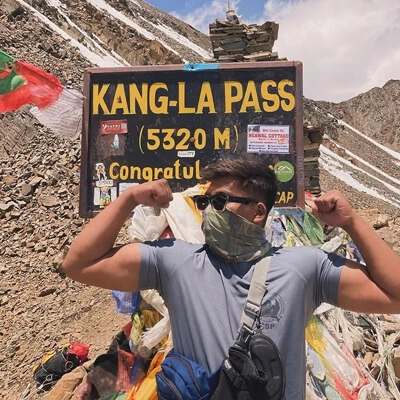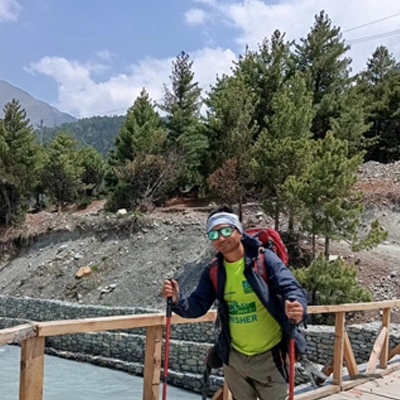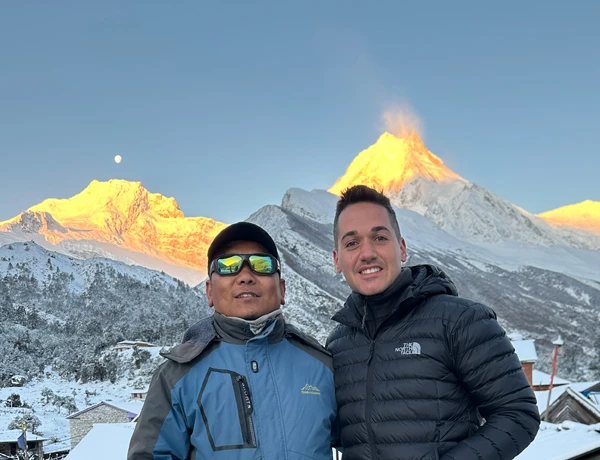The Manaslu Circuit Tsum Valley Trek is probably one of the most adventurous treks in the Himalayas and offers a lifetime trekking experience. If you are an adventure enthusiast who seeks challenges and less-crowded trails yet enjoys being grounded and escaping into nature, then this trip is the ideal choice for you. Trekking in the Manaslu region opened in 1991, whereas Tsum Valley was opened in 2008 for foreign travelers. Closed for decades, these two regions have well preserved and protected the unspoiled vegetation, ancient Buddhist culture, and exotic wildlife.
The Manaslu Circuit and Tsum Valley Hike follow spectacular terrain that gradually ascends towards the hidden Tsum Valley to a place called Nup Ri. The locals here are the descendants of Tibetans and are believed to have settled in the 16th century. Their language, culture, dress, and customs resemble those of Tibetans. Nup Ri offers breathtaking mountain scenery that is unparalleled anywhere else in the world. It's ironic how trekking in Tsum Valley makes you feel very close to home, which never existed yet is located far away from the modern world in the middle of nowhere.
The Manaslu Tsum Valley Trek explores the 8th highest mountain in the world, Mt. Manaslu. You will be exploring beautiful remote villages like Chhekampar, Chhule (settlement near water), Nile (sunny place), Dumje, Lokpa, Lho, Sama Gaun, Tilje, and many others. Along the trail, you will come across Piren Phu Cave, Mu Gompa (1895 AD), Dephyudonma Gumba, Rachen Gumba, Dzongkha Dzong, Pungyen Gompa, and many other ancient monasteries. The trail leads you to Manaslu Base Camp from Samagaun (the birthplace of Mingyur Rinpoche's "The Joy of Living"). The trail traverses the demanding Larkya La Pass, situated at 5,160 meters above sea level.
Due to the extreme isolation of the region, the strenuous route, and the limited facilities, not many people have completed this trek. Get to explore the unspoiled beauty of the region, pass by gorgeous waterfalls and green meadows, and witness panoramic views of the Himalayan mountains like Mt. Manaslu (8,163 m), Ganesh Himal (7,422 m), Ngadi Chuli (7,871 m), Mt. Hiunchuli (6,441 m), Himlung Himal (7,140 m), Mt. Kang Guru (6,981 m), Mt. Annapurna (8,091 m), etc. To know more about the Manaslu Circuit via the Tsum Valley Trek package or Manaslu and Tsum Valley Trek costs, get in touch with us anytime. Mt. Manaslu (8,163 m) is included in the list of the Top 10 Highest Mountains in the World Secured as the 8th highest position on earth, the Japanese team successfully climbed it for the first time in 1956.
What is the appropriate trekking itinerary for Manaslu Tsum Valley?
The Manaslu Tsum Valley Trek itinerary takes off with a long drive from Kathmandu to Machhakhola via Arughat Bazar and Soti Khola. The trail from Soti Khola ascends to Rumchet through Kashi Gaun as an alternative trail of the Manaslu Trekafter road construction, and regular buses are available at Machhakhola. Following the Budhigandaki River (Yashodhara Nadi) bank trail, reach Tatopani, where you will take a small break to enjoy a natural hot spring and move towards Dobhan. The trail then gradually ascends through lush forests, ravines, and villages like Philim and Chumling before taking you to Chhe Kampar.
On the way from here comes the famous Milarepa Piren Phu cave. You will reach Chule-Nile and trek towards Mu Gumba, the biggest monastery in Tsum Valley, established in 1895 AD. You will also get to visit Dephyudonma Gumba before leaving for Rachen Gompa. Further, the trail goes through the scattered settlement of Dumje and continues to Lokpa, crossing Ripchet. Slowly walk by Deng, Ghap, and Lho villages to reach Sama Gaon, where you will take a rest day for acclimatization. You can hike to Manaslu Base Camp.
Enjoy breathtaking mountain scenery on the Manaslu Circuit toward Samdo and eventually reach Larkya Phedi. From here, the trail follows a steep and rugged uphill route to the top of the Larkya La Pass and descends to Bimtang. Following a stream, trek through a dense bamboo forest to reach Tilje and drop down to Dharapani, from where you will drive to Kathmandu via Besisahar. The 26-day Tsum Valley trek with the Manaslu Circuit is quite a long trek. If this won't be suitable for you due to a short holiday, then we at Nepal Mother are glad to customize the trip according to your vacation schedule. It can be made the shortest in 18 days and average 23 days also. However, if you are looking for a 14-day trip from your home and back home, then the Short Manaslu Circuit Trek 11 Days would be perfect.
If an 18-day trek is too short for you, you may do a 22-day trek in the Manaslu Tsum Valley. For more details, drop us a message through the Customize Itinerary.
Journey to the Village of the Gumba's: Tsum and Nubri Valley, the Buddhist Holy Land
Tsum Valley and Nupri Valley are known as the "Village of the Gumba." The Manaslu Tsum trek goes through the two sacred valleys, Tsum and Nubri. Lokpa is the main entrance gate of the Tsum Valley, whereas P.ewa is the gate of the Nupri Valley. Since the region is a holy place and a peaceful land, it prohibits the killing of any animal. This area has over ninety-two gumbas/monasteries, most of which are aged from the eighth to the eleventh century. You will visit some of the most important gumbas, like Mu Gumba, Rachen Gumba, Pema Chhuling Gumba, Milarepa Gumba, Tsum Gumba, Shringi/Serang Gumba, Gumba Lungdan, and Hinang Gumba, during the Manaslu Circuit with Tsum Valley trek. Some are nunneries (only for females), gumbas like Rachen Gumba and Gumba Lungdan, and some are only for male monks, Khempo.
What difficulty can be expected from the Manaslu Circuit with the Tsum Valley Trek?
Manaslu and Tsum Valley Trekking is a strenuous trek. This trek is not for beginner trekkers, as the terrain is extremely steep and rugged. There are numerous ascents and descents throughout the route, with the crossing of ravines, dense forests, sloped paths, and a pass. You have to be strong, both physically and mentally, to join this trek. Mentally, the Manaslu Tsum Valley Trek Itinerary explores a very remote part of the western Himalayas, which only a handful of travelers visit every year.
The route lacks developed tourist infrastructure and offers limited services. Prep for the trek by exercising and hiking short distances. It is very important to have constant stamina and endurance to survive the journey. With our support team and expertise, you will be able to smoothly complete this adventurous trek without any problem.
Trigger the Best Time for Manaslu Circuit and Tsum Valley Trek
The best time to do the Manaslu Circuit and Tsum Valley Trekking is from March to April (spring) and October to November (autumn). The temperature reaches up to 24 °C in the daytime and -4 °C during the night in spring. The views are clear and stunning, with blooming trails. In autumn, the temperature varies from 25 °C to -6 °C. Again, the weather is stable, and the climate is moderate in autumn too. The days begin to show a hint of coldness in the air. You can be part of the biggest festivals if you trek in autumn. It's a festive season in Nepal.
Permit and prepare Work for the Manaslu Tsum Valley Trek
Firstly, the Manaslu region is a restricted area, requiring special permission from the Nepali government for trekking in this part of the country. Along with that, there are certain rules that trekkers must follow. As a foreign trekker, you have to trek with a local travel agency with at least two trekkers in the group (not including the guide/porters). Likewise, you cannot get your Nepal trekking permits through an independent guide.
Manaslu Circuit Trek Permits
-
September to November:USD 100 per person for the first seven days and an additionalUSD 15 per person per day from the eighth day onwards
-
December to August:USD 75 per person for the first seven days and an additionalUSD 10 per person per day from the eighth day onwards
Tsum Valley Trek Permits
- September to November:USD 40 per person for the first seven days and an additional USD 7 per person per day from the eighth day onwards
- December through August: $30 for each person for the first seven days, plus an extra $7 every day starting on the eighth day
In addition, you need to obtain permits for the Annapurna Conservation Area Project (ACAP) and the Manaslu Conservation Area Project (MCAP). The obtaining of these permits can be handled by your trekking agency in Nepal.
- The Manaslu Conservation Area Project (MCAP) permit costs NRP 3,000 for non-native individuals.
- SAARC countries' approval for the Manaslu Conservation Area Project (MCAP) is NRP 1,000.
- The Annapurna Conservation Area Project (ACAP) entry permit costs NRP 3,000 for non-residents.
- Authorization for the SAARC countries' Annapurna Conservation Area Project (ACAP): NRP 1,000
Accommodations for the Tsum Valley Trek in Manaslu
The Manaslu Tsum Valley Trek is a teahouse trek. There are teahouses where you can stay the night in every village. Though basic, this teahouse is cozy enough to spend the night in. Single rooms are generally unavailable and can cost more than twin-shared accommodations. Most people use the restroom frequently. We provide full support (including crew members with training) and high-quality, thoroughly tested tents and equipment if you would rather camp. This is a fantastic way to make the most of the Tsum Valley Trek and the Manaslu Circuit. There might be a private restroom on the lower level.
This is a comprehensive guide to the Tsum Valley Trek and the Manaslu Circuit.
Where is Manaslu Mountain located on Earth?
Mount Manaslu, which is located in Nepal's Gorkha district and is 8,163 meters above sea level, is the eighth-highest mountain in the world. It is a part of the Himalayas' Mansiri Himal sub-range, which also includes Tibet to the north. It is located approximately 40 miles (64 km) east of Mt. Annapurna, one of the ten highest peaks in the world, and is a part of the 1998-formed Manaslu Conservation Area Project (MCAP). There are 1,663 km² of protected natural and cultural resources. The holy Tsum Valley Trek and the Manaslu Circuit Trek with Larkya La Pass (5,160 m) are two of the most popular trekking routes through Manaslu; both treks offer stunning mountain views, enthralling landscapes, and preserved traditional cultures and beliefs.
Could you please reassure us that the dangerous and narrow section of the track in the landslide area after the Tsum Valley gate, as shown in the video, is not the route we will be taking?
Thank you very much for sharing the video about trekking trail conditions in April 2024. Yes! There are sections of the trail that require us to traverse through areas susceptible to landslides. I hope the trail won’t be that bad.
The locals from Tsum Valley also use the same trail for their daily commutes to the city. Therefore, I trust that the trail will be improved when you visit. This is the only trail to enter the Tsum Valley so far. We have successfully organized this trek in June 2024 as well.
Currently, the monsoon in this area is significantly slower than it was in the middle of July. And at the end of September, there will be less or no rain. Every time before beginning the trek, we consult with the local people of Manaslu and Tsum Valley at Philim, Lokpa, and Chumling villages regarding trekking trail conditions. When we got a green signal about the trail, we processed the trekking permit and other logistics.
If a landslide or other unexpected event blocks the trail, we must consider other options.
For this, we may visit some side trips in the Manaslu circuit area, like Serang Gumba, Kal Tal, Hinning Gumba, and Ruila Pass at the Tibet Border, etc. The trail to the Manaslu circuit is much further than the Tsum Valley. Here is the Manaslu Circuit side trip itinerary.
I assume the trail will be accessible, and you will complete the trip spontaneously. Let’s think positively; everything will go well. “The Law of Attraction.”
I will contact local people before starting the trek as well.
Should we add a rest day after Day 6 or 7, given our 12-day stretch of walking?
It's encouraging to learn that, despite being in your mid-60s, you maintain good physical fitness and are looking forward to a rest day after a 6- to 7-day walk.
In accordance with our previous email conversation, I have provided a trip itinerary that meets your requirements.
If you have a longer holiday in Nepal, then I would like to suggest you extend the trekking days to two or three days. This will help you take a rest day and explore more leisurely. This trek, some trekkers complete in 18 days in both parts of Tsum Valley and Manaslu Circuit, and some people extend it for more than 30 days as well as the Ultimate Manaslu Trek.
Is there reliable internet or mobile coverage on the walk, and which Nepali SIM cards offer the best coverage?
Well, most of the teahouses have paid Wi-Fi services (NPR 200 and above) for the entire trek. From where you can live, talk with your family and son. However, if you would like to buy Nepali SIM cards, then it is better to buy NTC; NTC has better coverage than NCEL. It boasts excellent connectivity to Dharmashala, Samdo, Samagaun, and Bhimtang. You can purchase SIM cards at most places in Thamel, provided you provide a copy of your passport and a PP-size picture. If you need any help, we are more than pleased to assist you.


